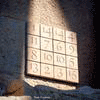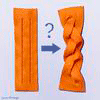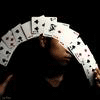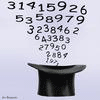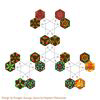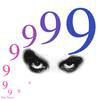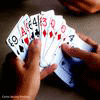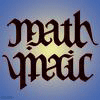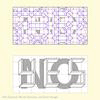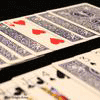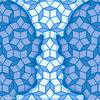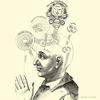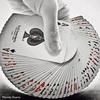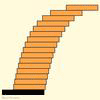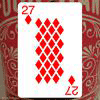Mathematics Awareness Month 2014: Mathematics, Magic, and Mystery
Navigate the Calendar
Mental Math
Quick, what's the square of 347? How about the square of 721? Don't reach for a calculator! If you're Arthur Benjamin, you can do it in your head:
Now, yes, it would be easy to fake a video performance like that. But there's nothing fake about it. Indeed, Professor Benjamin relishes in teaching the techniques behind his amazing feats of mental arithmetic. If you need more convincing that his powers are genuine before moving on, jump ahead to the TED video in the next section. But if you want to learn some incredibly simple tricks for doing mental calculations, the video below is a good place to start.
Now that you know some of the basics, hone your skills by testing them out on your friends. Or think about the challenges below...
Taking it Further
Here is a longer and more convincing demonstration of Professor Benjamin's skills (for any who doubt his abilities, or who just want to see more):
With the right mindset, the patterns of arithmetic can be tamed and harnessed. Try your hand at these challenges posed by Professor Benjamin:
- Choose a number from 1 to 70 and then divide it by 7. (I’ll be nice and let you use a calculator, but you’ll need one that has at least seven decimal places.) If your total is a whole number (that is, no digits after the decimal point) divide the answer by 7 again. Is there a 1 somewhere after the decimal point? I predict that the number after the 1 is 4. Am I right? Now add up the first six digits after the decimal point, and you will find that the answer is 27.
- Choose your favorite number from 1 to 100. Double it, then add 5. Now multiply by 50, then add 1,763. If you have had your birthday already in 2014: happy birthday and add 1 to the total. Subtract the year you were born. Your answer begins with your favorite number, followed by your age. Why does that work?
- Choose a four-digit number, with each digit different. Scramble the digits to create a new number. (For instance, if your first number is 2,357, your second number might be 7,325.) Subtract the smaller number from the larger, and add together the digits of the resulting number. If your sum is one digit, go no further. If your sum is a two-digit number, then add the two digits together. I predict that the answer is 9. Am I right?
- In the TED video above, starting at time 5:50, Professor Benjamin asks his subjects to multiply the number 8,649 by any three-digit number. He then asks them to read off all but one of the digits of the answer, in any order. He proceeds to tell them the digit they left off. How does he do it?
The Underlying Mathematics
The mathematics behind the challenge problems above, and behind mental arithmetic, is really just simple algebra. For the challenge problems, the algebra reveals what may have initially seemed mysterious. For the mental math, the algebra is often simple in principle, but it takes practice to master!
The answers to (and the algebra behind) the first three challenge problems above can be found the article Ta Da, from the New York Times (Dec. 30, 2009).
The answer to the final problem is stunningly simple, and is based on the well known fact that a number is a multiple of nine precisely if the sum of its digits is a multiple of nine. (Find an explanation here.) With that fact in hand, Professor Benjamin first noticed that the number 8,649 is a multiple of nine (since its digits sum to 27). When multiplied by a three-digit number (or by any whole number!) the result is still a multiple of nine. Therefore, the digits in the answer will sum to a multiple of nine. When the subjects reveal all but one of those digits, Professor Benjamin quickly determines the value of the missing digit. You can hear Professor Benjamin explain this (and give some performance tips and caveats) starting at time 40:50 in the video here.
A few more tricks based on the same principle can be found here. Chapter 14 of Martin Gardner's book The Unexpected Hanging and Other Mathematical Diversions gives an expansive review of the many tests for divisibility. Any introductory textbook in number theory will delve into even greater detail.
While lightening fast mental calculation takes practice, basic principles such as those outlined by Professor Benjamin in the second video provide the foundation. One of the many benefits of such study is the realization that unlike the standard pencil and paper methods for addition and multiplication, mental calculations typically lead you to find the digits of your answer from left to right, rather than right to left. This means that if you quit before your finish, you at least have an approximate answer! Note that in the big finish in the TED video, where a five-digit number is squared, the first thing Professor Benjamin writes down is a 3, and he knows the answer is 3 billion (and something).
For those wishing to take their mental math skills to the next level, the book, Secrets of Mental Math: The Mathemagician’s Guide to Lightning Calculation and Amazing Math Tricks, by Arthur Benjamin and Michael Shermer (Crown, 2006), is an excellent resource.



